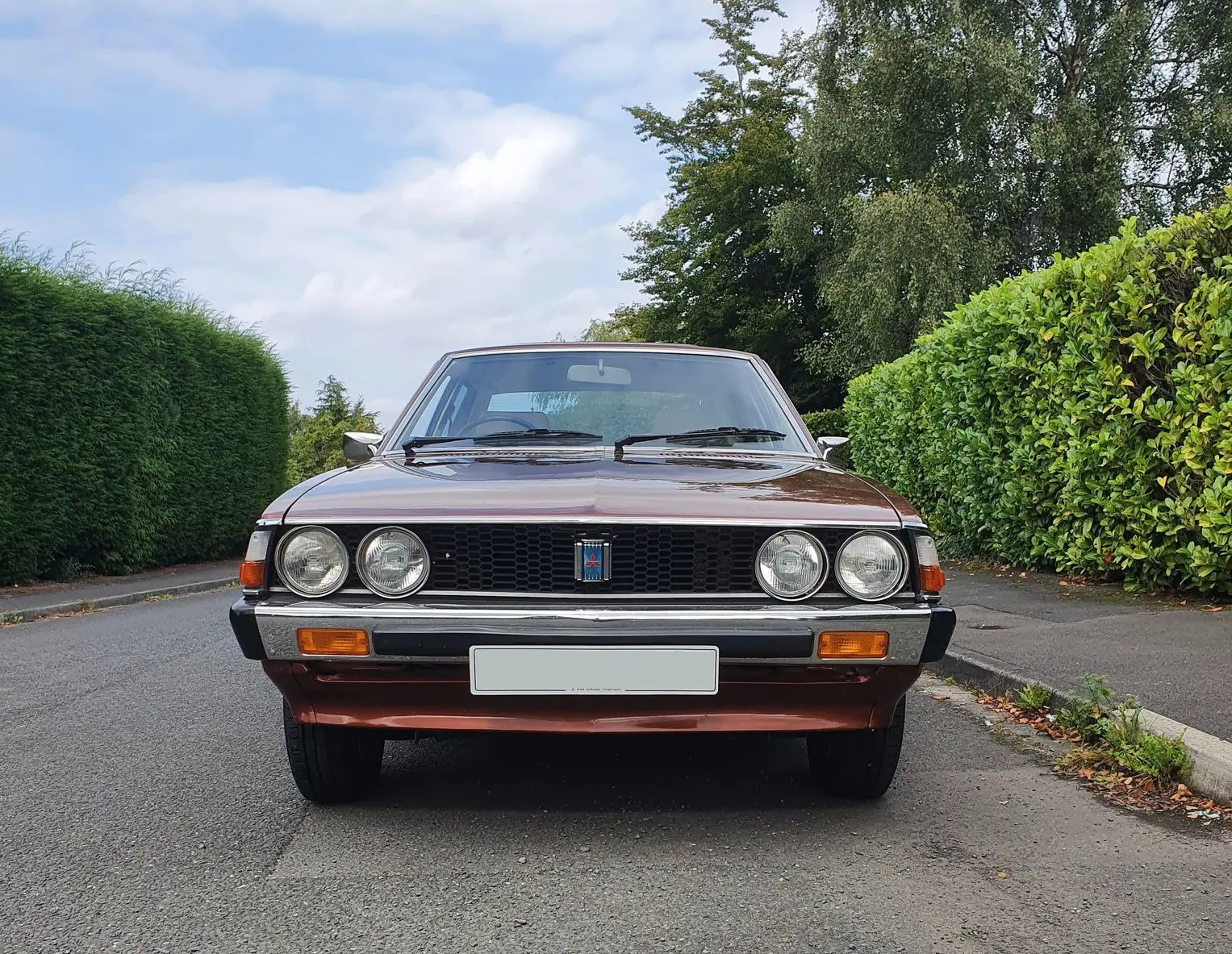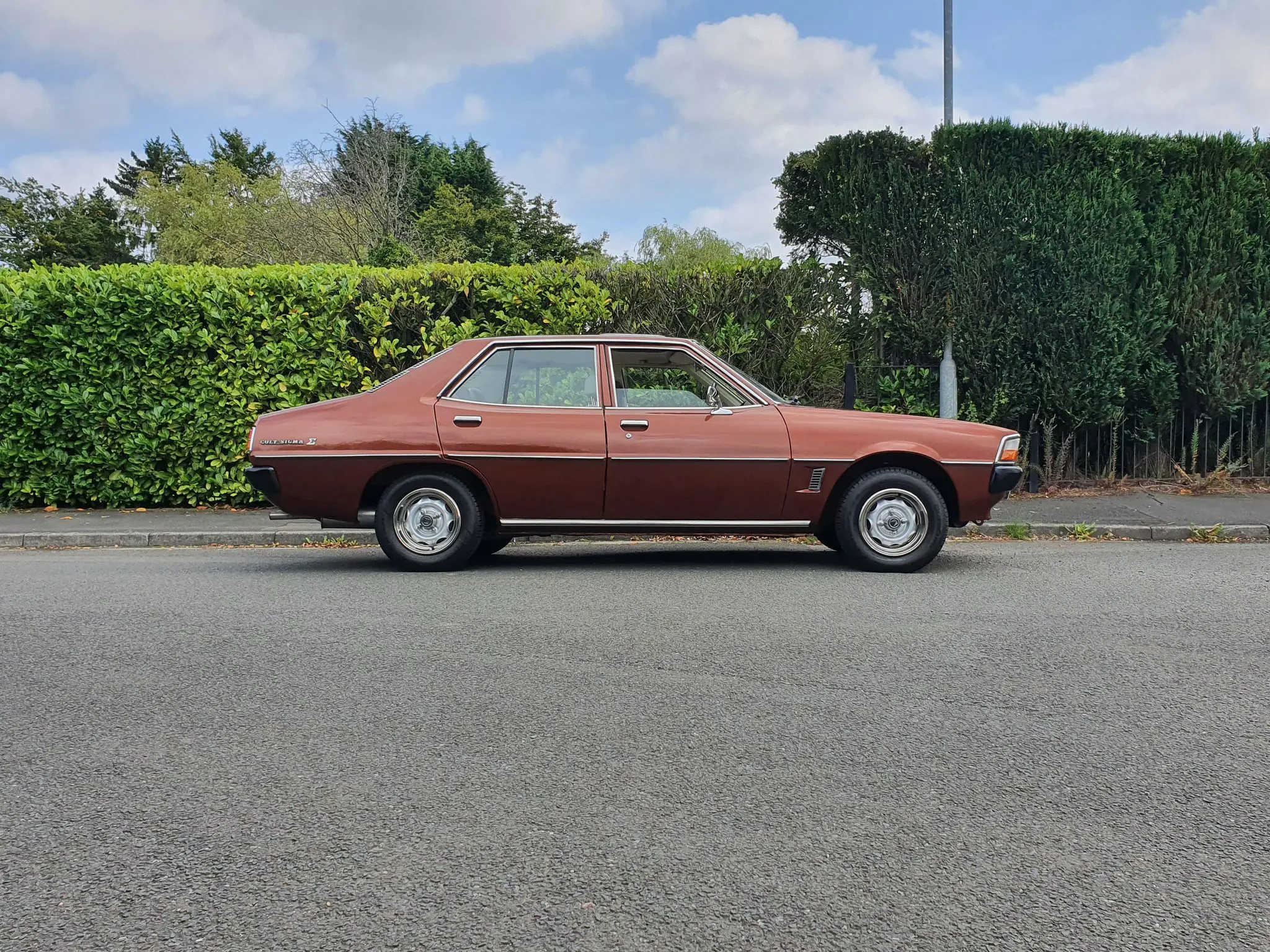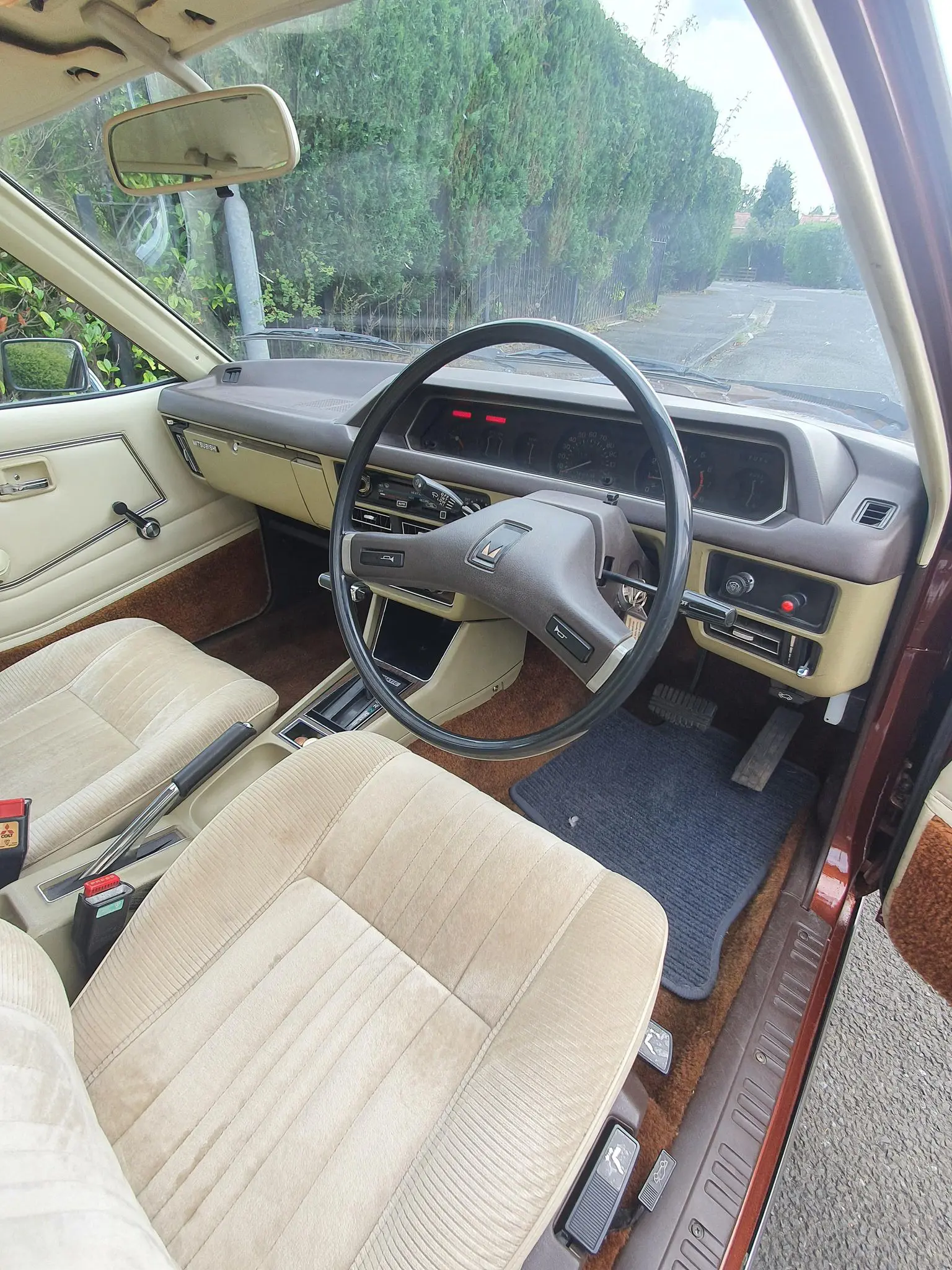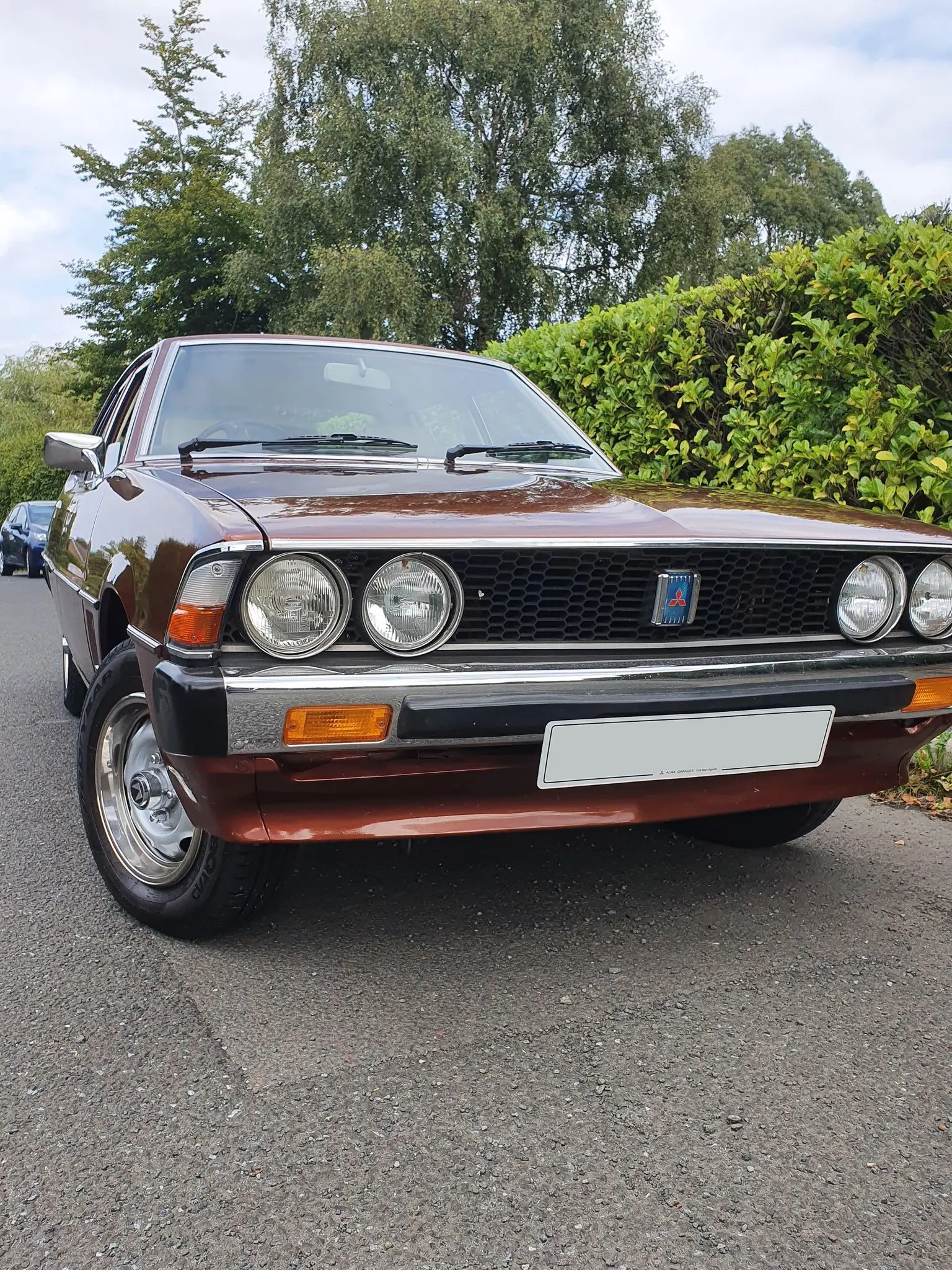MEET THE OWNER – SIRAJ FAROOK AND HIS COLT SIGMA
19 September 2024
The details of a car you can recall from childhood are often strange, or at least faintly offbeat. I still have vivid memories of the plastic grille cover applied to a Citroën Dyane 6 for the winter, the early Mini’s flashing indicator stalk – and being highly impressed by the luxury that was a Colt Sigma. In the late 1970s, some new cars were still devoid of reclining front seats, but here was a vehicle with an adjustable rear backrest. Today, Siraj is the proud owner of one of the very few surviving examples.

Mitsubishi commenced its UK operations in the autumn of 1974 under the Colt brand name and used the Sigma name for the third-generation 120/130-series Galant. They made their British debut at the 1976 London Motor Show:
Meanwhile, according to the spectacularly over-the-top sales copy:
To the mathematician, Sigma is the 18th letter of the Greek alphabet, used to signify the Total Sum of any expression. This is precisely why Mitsubishi chose it for their 4-door sports saloon.
In other words, a Sigma owner could look down upon their Ford Cortina Mk. IV and Vauxhall Cavalier driving neighbours. Colt GB imported the 1600 GL and 2000 GLX saloons, costing £3,700 and £4,220 respectively in 1978. A 2000 Estate was also available, and automatic transmission was £325 extra. By comparison, a Cortina 1.6 GL was £3,423, a 2.0 Ghia was £4,192, a Morris Marina 1.8 HL was £3,532 and a Cavalier 1.9 GL £3,631.

What the Sigma offered over such British rivals was exceptionally lavish equipment. Three-speed wipers and tinted glass would make you the talk of Elm Drive, and the GL featured adjustable steering and a driver’s seat adjustable for tilt and lumbar support, plus a remote-control boot release. The GLX came with velour trim, five-speed transmission, a tachometer and that reclining backrest for the rear seat, giving the occupants a choice of five settings. Your friendly local Colt dealer could tell you that no other car in the world had such refinement, while Motor reflected: “There is no doubt it means business.”
Motor Sport regarded the flagship Sigma as “below par with the average 2.0-litre family saloon for long-distance driving”, although a “very pleasant car in general”. Autocar similarly found the 2000 pleasing to drive and to live with, and “the general air of quality makes it a car well worth considering in its class”, while The Telegraph praised the “tasteful comfort inside”. Such qualities were precisely what the average Sigma buyer required, and it was also good-looking in a Pan Pacific fashion. Colt boasted, in their modest fashion, that “beauty of time and shape is closely related to function.”

Saloon production ended in 1980, and Siraj’s family has a long tradition of Sigma ownership:
I never had the opportunity to be around British 1970s cars as my family was very set on Japanese cars. My grandad had a Sigma when they were new, and my dad used to take it out and race his friends. It was a 1600, but as it was one of the final year V-registered cars, it had the trim of the 2000s. He eventually traded it in for a Riviera Red Galant 2000 GLS.

As for Siraj’s current Sigma:
It is a 2000 and is waiting for some donor parts, so it is off the road for the time being. It is the final automatic version – or was – and has more of a Datsun Laurel feel to it, only without the silky six-cylinder engine. This one will soon be converted to a manual with all factory parts due to the auto box deciding it doesn’t like its job anymore! When I drove her, the typical reaction was mostly confusion – many people cannot really pinpoint what it is, so they come up and ask. Those that do remember are very pleased to see it.
We look forward to the return to the highway of the Sigma, not least because just two are believed to remain in use: https://www.howmanyleft.co.uk/?q=colt+sigma. As Colt GB promised, it was “Designed for the outside lane”. And who could forget that reclining back seat?
With thanks to Siraj Farook for his time and permission to use the images in this blog.
